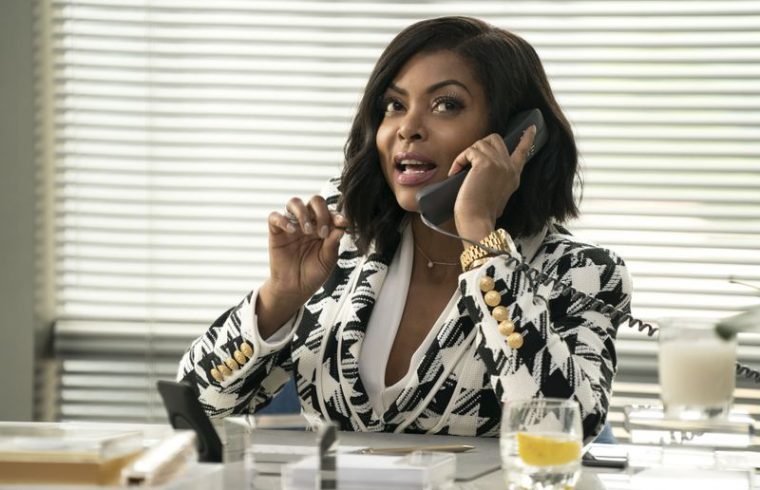We have entered a new era of romantic comedies, and like any new era, this one comes with a slew of distinctions from society’s previous form, all of which descend from one major shift.
Much like the new philosophical way of thinking moved us into the Age of Enlightenment, and like the advent of the cotton gin and steam engine brought about the Industrial Revolution, society’s recent social progress has ushered us into the Rom-Comaissance — marked largely by the death of the classic rom-com tropes.
No longer will we stand for the decades-old stereotypes infiltrating the genre, the inexplicable perfections in every visual, the happy coincidences that drum every story beat. We want lighthearted love stories that we can believe in — or at least, that we can see glimpses of reality in. (We don’t want everything to be different — all the necessary story elements remain: the meet-cutes and romantic gestures, the not-so-realistic concepts.)
This Valentine’s Day, there are two movies in theaters that exemplify the new age rom-com — What Men Want and Isn’t It Romantic.
In What Men Want, Taraji P. Henson gender-reversed Nancy Meyers’ What Women Want for a story about a high-powered sports agent struggling to be recognized for her value at work who gains the power to read the minds of the opposite sex after some mysterious tea and a head injury.
And in another head injury romp, Rebel Wilson stars in Isn’t It Romantic, about a rom-com skeptic who gets stuck inside a romantic comedy and must live through the story to find her way out.
Both movies take very different approaches to address the problematic tropes that we used to sweep under the rug. MTV News spoke with representatives from both films to dissect the progress we see on the screen.
Trope No. 1: The Single, Impossibly Gorgeous Leading Lady
 Paramount Pictures
Paramount Pictures
In both new rom-coms, we have leads who look different than the lean, button-nosed Meg Ryans and Kate Hudsons we’ve grown used to seeing in the roles.
On one side, we have Henson, a Black woman, and on the other, we have Wilson, a women who, as she noted to MTV News, looks like most women in the United States. “The average American woman is a size 16-18, which is my size,” Wilson said.
But even though both stars look different than the standard rom-com lead, neither movie used their looks as central story lines — they were both just women — which was, kind of, part of the beauty of seeing them in these roles.
In fact, Henson’s race “was not a factor” for What Men Want director Adam Shankman. “The fact that she was a woman was essential, but a woman who maintains the power that Taraji just wears so easily.”
 Warner Bros. Pictures
Warner Bros. Pictures
Likewise, Isn’t It Romantic director Todd Strauss-Schulson insisted that their movie had “literally nothing” to do with Wilson’s body. “It’s not an important thing,” he said. “There’s plenty of women that look like her that have lots of love in their life, and big families, and lots of boyfriends, and it’s nothing to do with that.”
This repeated sentiment reflects a very progressive way of thinking — that we can appreciate seeing different types of women on screen, and at the same time, we can see them for more than just their appearance.
And how, you might ask, did rom-coms get to this progressive place?
Well, it certainly didn’t hurt that both Henson and Wilson served as executive producers of their respective movies, meaning both women had a say in how their characters (and other women in the film) were portrayed. How’s that for behind-the-scenes representation?
Trope No. 2: The Gay Best Friend
 Paramount Pictures
Paramount Pictures
While it is certainly OK to be both gay and your best friend’s flamboyant good witch, that’s definitely not the only way to be gay — but you might not realize that if your only interactions with members of the LGBTQ community occurred within the world of classic romantic comedies.
Fortunately, the Rom-Comaissance has brought with it an expanded understanding of the marginalized community. Take, for example, Josh Brener’s Brandon in What Men Want. As Ali’s (Henson) assistant, Brandon’s primary role is to be of service to his very busy sports agent boss and, because of that, his life does seem to mostly revolve around her — a setup that could easily fall into the GBF trap, but doesn’t, thanks to their contemptuous boss/employee dynamic.
That wasn’t always the case, though, Shankman noted. Originally, Brandon was more of a “fairy godmother” to Ali — which he didn’t find to be believable. “It was problematic for me. And I was extremely upfront about that,” the director recalled. “I was the only gay person in the room when those discussions were happening.”
Because of his ability to speak up and his collaborators’ willingness to listen, Shankman was able to paint a more realistic picture of what he envisioned it would be like to be a gay man in a workplace characterized by its toxic masculinity and then translate that to the screen.
“He would have to really want to be there because he loves sports and because he believed in himself,” Shankman said. “And so that’s going to be a different kind of guy than the one who was written who was like, picking her shoes out for work.”
In other words, there can be 99 people in the room, and all you need is one behind-the-scenes representative willing to speak out against stereotypes.
Trope No. 3: The Bedroom Blackout
 Warner Bros. Pictures
Warner Bros. Pictures
One notable thing about rom-coms is that no one ever actually has sex. There are cues to indicate that sex happens or is going to happen, but usually when things get steamy, the screen cuts to black. (Did Richard Gere’s Edward and Julia Roberts’s Vivian actually go all the way on that piano? One can only assume.)
Well, in these new rom-coms, there’s no sexy sugarcoating.
“Women are always magical, sexual… It’s either that or they’re delicate flowers,” Shankman noticed — which, to filmmakers, means there’s “an opportunity to do more fun storytelling.” In this case, that opportunity was for more raunchy female comedy in the vein of Broad City or PEN15 (but not quite so explicit).
In one scene, Henson’s Ali is a maniac while in bed with love interest Will (Aldis Hodge) — she gets bug-eyed and basically uses him as a sex doll. Her wild behavior only becomes funnier when Ali can read Will’s thoughts later on. “While we were shooting it, I was laughing so hard because I had never seen a movie where a woman was represented as being terrible in bed,” Shankman said.
Isn’t It Romantic hits that nail right on the head after Wilson’s Natalie wakes up after, apparently, a night with love interest Blake (Liam Hemsworth). Blake is feeling particularly bright after a night of passion, but Natalie keeps it totally real, saying that they didn’t actually have sex and their lives just cut to the next morning. It turns out, every time Natalie tries to initiate sex, life cuts it out.
That kind of blatant comedy is present throughout the movie, which Strauss-Schulson hoped would help charm the viewers. “The movie wants to be so fun and funny that you open up to it,” he said. “So at the end when feeling comes at you, it doesn’t have anything to penetrate. It just kind of catches you.”
Which leads us to one final, very important trope of the past.
Trope No. 4: A Man Will Complete You
 Warner Bros. Pictures
Warner Bros. Pictures
To prepare for Isn’t It Romantic, Strauss-Schulson spent 14 days watching every rom-com made between 1988 and 2007, and he noticed a few patterns. Crazy closets, running to stop a wedding, shellfish and ordering Chinese food from Mr. Wong’s, half-moon windows, and “so many flowers in places that flowers don’t even belong.”
But one thing irked him the most — the suggestion that “another person is holding the key to love for you in your life. That another person can complete you. That another person can make you whole. And if you just swipe right enough times that loneliness and sadness and isolation will be vanquished from your life,” he said.
Strauss-Schulson did not want to perpetuate that harsh narrative; he wants you to leave the theater — single or not — knowing that you are already complete and you always have been. “If you can accept yourself, you can love yourself and you can be open to yourself, then you can be open to the world, and suddenly you can invite love in,” he said. “That’s what we tried to do at the end of this, at the end of this movie, is to tell that story. A rom-com about falling in love with yourself.”
 Paramount Pictures
Paramount Pictures
And in a true sign that we’re in the midst of a movement, Shankman had the exact same idea for What Men Want, telling collaborators early on in his involvement that he “will not make a movie about a woman who’s made whole by the love of a man” — instead presenting a story about “developing a truthful relationship with yourself and understanding your own power, sense of self-worth, and your own value.”
It’s this idea that’s key to the Rom-Comaissance — that you, or I, or anyone can find love, if only we look within ourselves. That’s where we’ll find our real happily ever afters.











